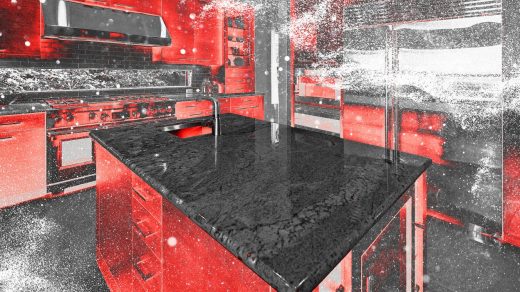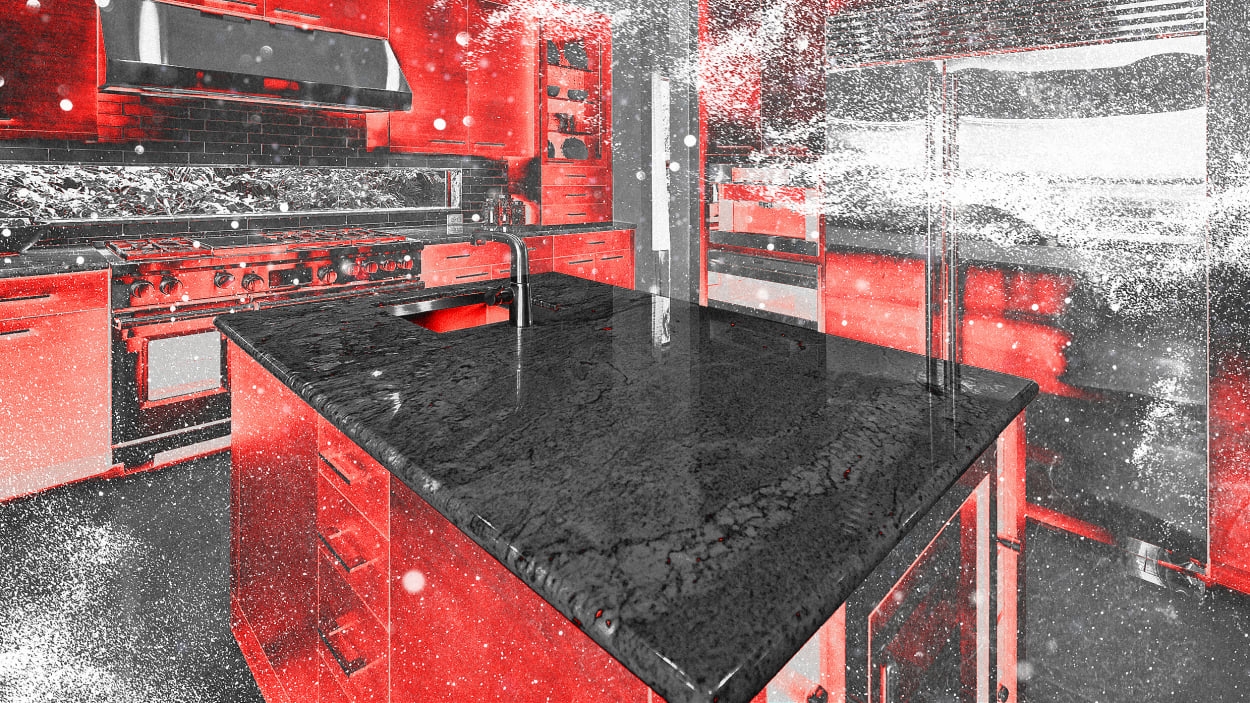Your quartz countertops may be giving workers a deadly lung disease
In the world of home renovations, engineered quartz has been the top choice for countertops for years. But for the workers who cut, grind, and polish the manmade stone, the design choice causes serious health risks. Workers exposed to the dust from this quartz are developing a potentially deadly and incurable lung disease called silicosis that has long been a workplace hazard for miners and stone cutters.
Engineered quartz countertops—also called engineered stone, or just quartz—are made of a mix of crushed quartz stone, polymer resin, and dyes, and they contain a high percentage of silica, a mineral that appears in sand, clay, and other stones. When fine silica dust is inhaled over a long period of time, that dust can get inside someone’s lungs and cause swelling and scarred lung tissue, which can lead to shortness of breath and coughing, and ultimately an increased risk of lung cancer, chronic obstructive pulmonary disease, and kidney disease.
Experts have been raising health alarms around engineered quartz for years. In 2014, Texas health officials learned of a worker at an engineered stone countertop company, who polished and fabricated stone countertops for a decade, who developed silicosis; it was the first reported case of silicosis associated with quartz exposure in North America. In 2015 , the Occupational Safety and Health Administration released a “hazard alert” around countertop manufacturing, noting that “Workers involved in manufacturing, finishing, and installing natural and manufactured stone countertops are at risk for significant crystalline silica exposure.”
Engineered stone has the highest silica levels, OSHA noted, with engineered quartz countertops containing over 93% silica (granite, in contrast, contains around 45% or less).
Since that first reported case, silicosis only grown as an occupational hazard in the countertop industry, particularly in California. Between 2019 and 2022, 52 engineered stone workers in California were diagnosed with silicosis, 51 of whom were Latino immigrants, according to a new study published today in JAMA Internal Medicine from researchers at UC San Francisco and UCLA.
Twenty of those patients had an advanced version of the disease, and 10 have died. Their median age was 45 years old, and they have worked in the stone industry an average of 15 years. Researchers say that their study, conducted in collaboration with the California Department of Public Health, is the largest U.S. study of this growing health crisis.
“Increasing case counts of silicosis among stone fabricators over the last 10 years . . . transforms the paradigm of an all-but-previously-forgotten disease in the U.S.,” said Jane Fazio, a pulmonary specialist at Olive View-UCLA Medical Center and coauthor of the study, in a statement. “Our study demonstrates severe morbidity and mortality among a particularly vulnerable group of young underinsured and likely undocumented Latino immigrant workers.”
One of those workers, the study notes, is Leobardo Segura-Meza, who was born in Mexico and immigrated to the U.S. in 2012, where he found work in Los Angeles as a stone worker. Segura-Meza wore a mask and used tools to reduce dust from cutting and grinding the engineered stone, but still, in February 2022, he went to the emergency room with shortness of breath, and was diagnosed with silicosis at 27. Researchers note he’s been on an oxygen tank since, and is on the waitlist for a lung transplant.
As of 2022, North America accounted for 35% of global demand for engineered stone countertops—the largest share. That demand isn’t slowing down; globally, the market for engineered stone was valued at $21 billion in 2021, and projected to grow to $35 billion by 2031. No country has yet banned engineered stone, though Australia is considering a ban as of this year after seeing a rise in silicosis cases. Los Angeles has also taken preliminary steps toward a ban.
The researchers are calling for better worker productions from silica dust exposure, more resources to diagnose silicosis, and even bans on engineered stone. “Our paper raises the alarm,” Sheiphali Gandhi, a UCSF pulmonologist and coauthor of the study, said in a statement. “If we don’t stop it now, we’re going to have hundreds if not thousands of more cases. Even if we stopped it now, we’re going to be seeing these cases for the next decade because it takes years to develop.”
(9)



